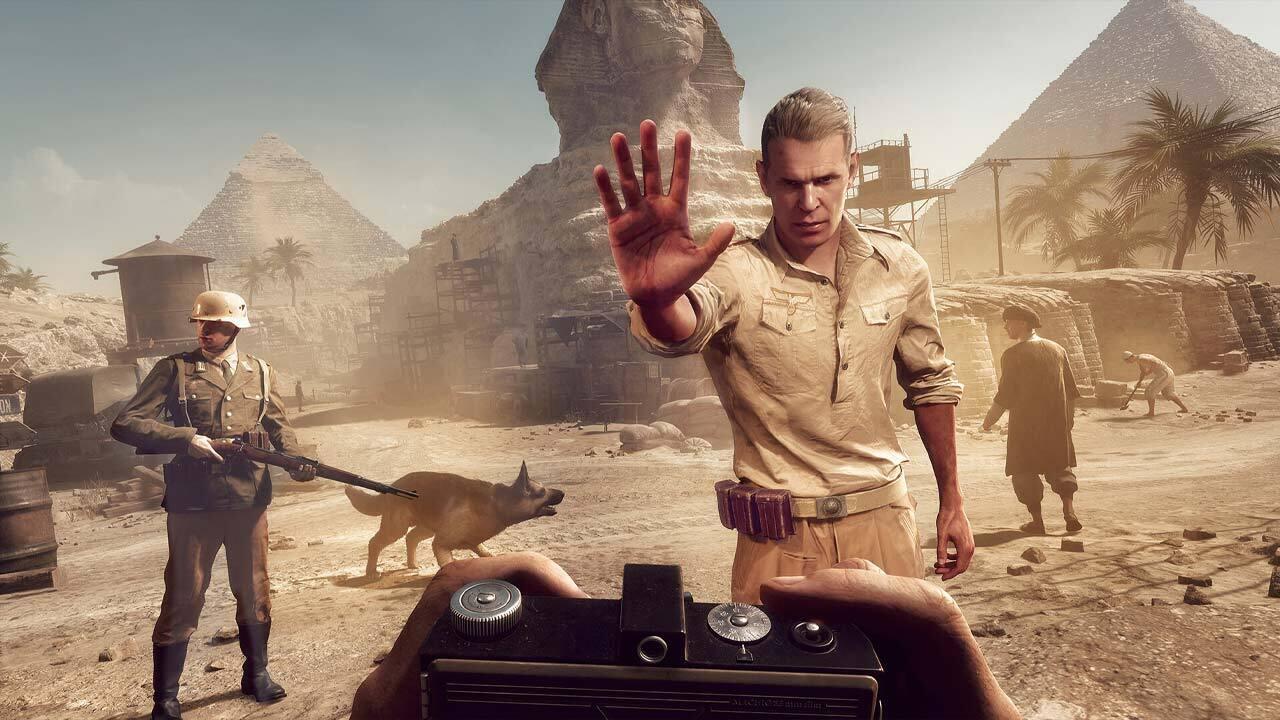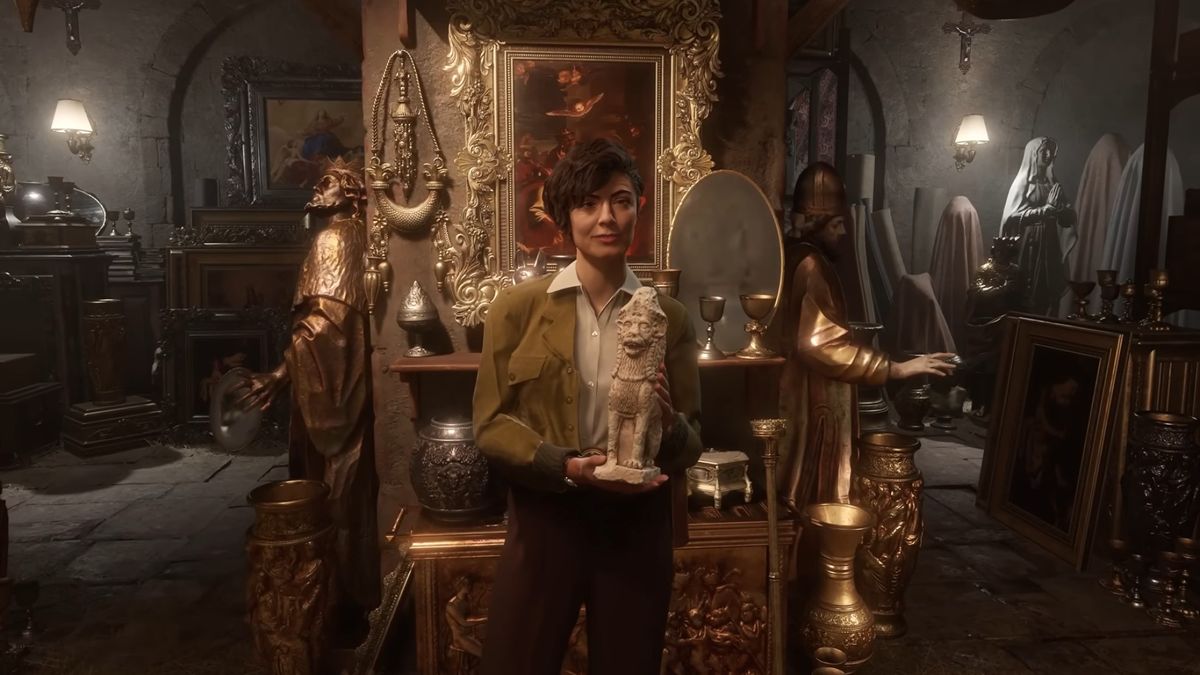During Gamescom 2024, I had the opportunity to sit down with Jerk Gustafsson (Executive Producer) and Axel Torvenius (Creative Director, MachineGames) to talk about Indiana Jones and the Great Circle. Let’s jump into this interview!
Q: Indiana Jones is a very beloved franchise with many fans of the movies and earlier games. How did you approach the huge responsibility of working on such a franchise? Was it something that stressed you at the beginning?
A: The whole thing started with Todd Howard, who had this long-standing dream of making an Indiana Jones game. He had a very specific idea for the base narrative and the big mystery that the world revolves around. He pitched that to Lucasfilm Games, and they found it interesting. Todd then came to MachineGames because he saw that MachineGames could be a good fit as a studio to do this. Obviously, we were thrilled to have the opportunity and eager to take on the challenge.
From there, we started developing Todd’s core idea, working closely with him and fleshing it out. Early on, we focused on understanding what makes the Indiana Jones character and world so unique. We’re massive fans ourselves, so dissecting what makes Indy who he is from a professional perspective was crucial. We looked at the tone and flavor of his world, which is somewhat contemporary but has its own distinctive style. This exercise helped us set the framework for what we could and couldn’t do to stay true to the spirit of early Indiana Jones.
We’ve also had invaluable input from Lucasfilm Games throughout the process. They’re experts on the IP and characters, and their knowledge has been essential in ensuring that the game aligns with the Indiana Jones legacy. The constant collaboration with them has helped us meet the challenge of creating something that lives up to the franchise’s reputation.
Q: How does this game tie into the broader Indiana Jones role? Is the story completely separate from the movies, or are there connections?
A: The story we’re telling is completely new and unique. However, there are nods, hints, and small Easter eggs throughout the game, which serve as a sort of fan service; though, in a way, we’re doing that for ourselves as much as for other fans. We’re fans too, so incorporating those elements was a natural part of the process.
It was also very important for us to create a game that can stand alone. There’s going to be a whole generation of players who haven’t seen the movies, especially since we’re coming out with the game at a time when many younger players might be unfamiliar with the original films. The game needs to work as a standalone experience, and our goal is to get people excited about this character that we love. We want players to finish the game and feel inspired to go watch the movies, even if they’ve never seen them before.
Q: First-person gameplay is in your DNA, but for an adventure game like Indiana Jones, it might not seem like the most logical choice. How do you incorporate elements that make Indiana Jones great, like the traps or panning cameras, when the player is looking through Indy’s eyes?
A: It might not seem logical at first, but for us, it really is. From the beginning, we approached this project with the mindset of how Indiana Jones would work in first-person. We broke down everything that’s important about the series—what components are needed and how they would translate into first-person. We found that all the key elements work in first-person; it’s just a matter of how you approach them.
First-person gameplay allows for a very intimate, physical experience. You get up close and personal with the environment, you’re reaching out, touching things, and interacting in a way that only first-person can offer. This perspective brings you closer to the action, making it more immersive. For example, the game includes a journal that you use to document your travels. You physically pick it up, flip through it, and the camera moves in a way that feels very natural in first-person. It’s all about using the first-person perspective to enhance the sense of being in Indy’s shoes.
However, we also wanted to make sure that players still feel like they’re playing as Indy and not just seeing the world through his eyes. That’s why we incorporated moments where the camera shifts to third-person, showing his iconic silhouette. This way, you get to see his face and recognize that you’re playing as Indiana Jones, not just cosplaying him. These shifts happen during certain moments in the game, such as when the camera pans out to show his full figure or during cutscenes.
Q: How does the hand-to-hand combat feel, and how do you balance the different aspects of Indiana Jones, like exploration, combat, and the series’ trademark humor?
A: We’re absolutely trying to balance those elements in a good way. When we started development, we actually created a pie chart that broke down all the key elements of Indiana Jones: infiltration, tension, set pieces, whip action, hand-to-hand combat, and even some gunplay. It’s really a mix of all these components, and we’ve worked hard to balance the pacing to ensure that each element gets its due.
One of the things we’re showcasing at Gamescom is the adventure aspect, which doesn’t always come across in a short trailer. The game has a slower pace, not boring, but more deliberate, allowing for deeper exploration. It’s not just a punch-fest where you go from combat to combat. It’s very much player-driven, giving you the freedom to tackle scenarios however you choose. The game is also more open than any other title we’ve made so far. For instance, when you reach the sands of the desert of Giza, you’re free to roam around and check things out. You might discover mysteries or optional tombs to explore, but it’s up to you how much you want to dive into these side adventures.
The humor is another key component. Indiana Jones is known for its cheeky humor, and we’ve consciously integrated that into the game. While the most obvious place for humor is in cutscenes or cinematics, we’ve also woven it into the gameplay. For example, in hand-to-hand combat, you might pick up a hammer, or even a banjo, and use it as a weapon. These small comedic moments, or one-liners like “It’s Professor to you,” help to capture the spirit of Indy’s quick wit and resourcefulness.
Q: Looking back at your previous games, which featured a lot of guns, how does it feel to focus more on hand-to-hand and whip combat? Was it liberating to do something different?
A: We have a lot of gun enthusiasts on the team, so it took some time to shift the focus. There’s a muscle memory in the team for creating cool scenarios involving guns, but that doesn’t really fit with Indiana Jones. So, we worked hard to build a complementary system with deeper stealth mechanics and a robust hand-to-hand combat system.
Player agency is really important to us, so we still allow players to pick up guns. If you punch an enemy and he drops a gun, you can pick it up and use it. But because we’ve built such a strong hand-to-hand combat system and tuned the gun combat to be more dangerous, most players don’t resort to using guns unless they’re really backed into a corner. For Indy, pulling out a gun should feel like a last resort, and that’s how it’s playing out in our tests. We were initially concerned that players might just go through the game shooting everything, but that hasn’t been the case. The combat system we’ve developed has made it a solid choice for players to stick with hand-to-hand combat.
Q: What was your favorite part of working on the franchise?
A: There are so many parts of it. In terms of the production cycle, one of the most rewarding moments is when things start to come together, and you can clearly see the direction the game is heading. But there are also smaller, more intimate moments that stand out, like being part of a motion-capture shoot and watching incredibly talented actors bring the characters to life. Seeing someone like Troy Baker in action, or witnessing the performances of Alessandro Amassonardi or Mariusz Gabrylewski, is just amazing.
For me, Indiana Jones is such a fantastic series, and the movies are incredible. I also have a lot of love for the point-and-click adventure games. In 2024, the concept of an adventure game can be a bit ambiguous, but this series gives us the confidence to really push those elements. We’ve included real puzzles and proper exploration, and we don’t feel pressured to insert a combat scenario every ten minutes. Being allowed to focus on the adventure aspect on a game of this scope is something I’m very thankful for.
Thank you very much. I’m really looking forward to the game.



